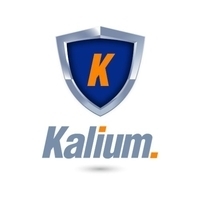
Articles
Spill Response Training: Safety & Compliance at Work

Share this post
Chemical spills are one of the most serious risks in industrial, manufacturing, and laboratory environments. Whether dealing with corrosive liquids, flammable substances, or other hazardous materials, one fact remains — employees must know exactly how to respond when a spill occurs. This is where spill containment training, spill kit training, and chemical spill training become essential. These programs aren’t just procedural checkboxes; they are the first line of defense against injuries, environmental contamination, and regulatory violations.
Why Spill Response Training Matters
Many organizations invest heavily in prevention but often overlook response readiness. Unfortunately, accidents are inevitable. Delays or incorrect actions during a spill can result in injuries, facility damage, or ecological harm.
Spill Containment Training
Spill containment training teaches employees how to recognize hazardous materials, assess risks, and deploy proper procedures to stop a spill from spreading. Training typically covers:
Types of spills (chemical, oil, biological, etc.)
- Assessing severity and risk level
- Using booms, absorbents, and drains correctly
- Isolation and evacuation protocols
- Documentation and reporting practices
Spill Kit Training
Simply having spill kits on site isn’t enough — employees must know how to use them under pressure. Spill kit training ensures workers are familiar with absorbent pads, neutralizers, PPE, and other kit contents. Training usually focuses on:
Choosing the right kit for different spill types
- Hands-on practice using kit components
- Strategic placement of kits across facilities
- Post-use inspection and restocking procedures
Chemical Spill Training
For organizations regularly handling hazardous materials, chemical spill training provides a more comprehensive approach. These programs combine containment and cleanup strategies with emergency coordination. Core topics include:
- Chemical hazard classification (flammable, corrosive, toxic)
- PPE selection and use
- First aid for chemical exposure
- Spill response roles and team responsibilities
- Safe cleanup, decontamination, and disposal
Linking Spill Response to Transport Safety
Spills don’t just happen onsite — they can occur during transport. That’s why many organizations pair spill response with transportation safety programs like IMDG training online (for maritime shipping) and IATA training in Canada (for air transport). These courses prepare teams to comply with international standards, manage spills in transit, and integrate response practices across storage, shipping, and delivery stages.
Why Partner with Kalium Solutions
Kalium Solutions offers industry-specific spill containment, spill kit, and chemical spill training designed to meet evolving safety and regulatory standards. Their programs are:
- Accessible for all skill levels
- Customizable for different worksites and industries
- Regularly updated with the latest compliance guidelines
- Integrated with IMDG and IATA training for broader safety coverage
Final Thoughts
Spills are unavoidable, but their consequences are not. With structured spill response training, employees gain the knowledge and confidence to act immediately and effectively. Combined with IMDG and IATA programs, organizations can achieve complete safety coverage — from storage facilities to transport networks. Ultimately, spill response training doesn’t just prevent accidents; it protects people, the environment, and business continuity.
